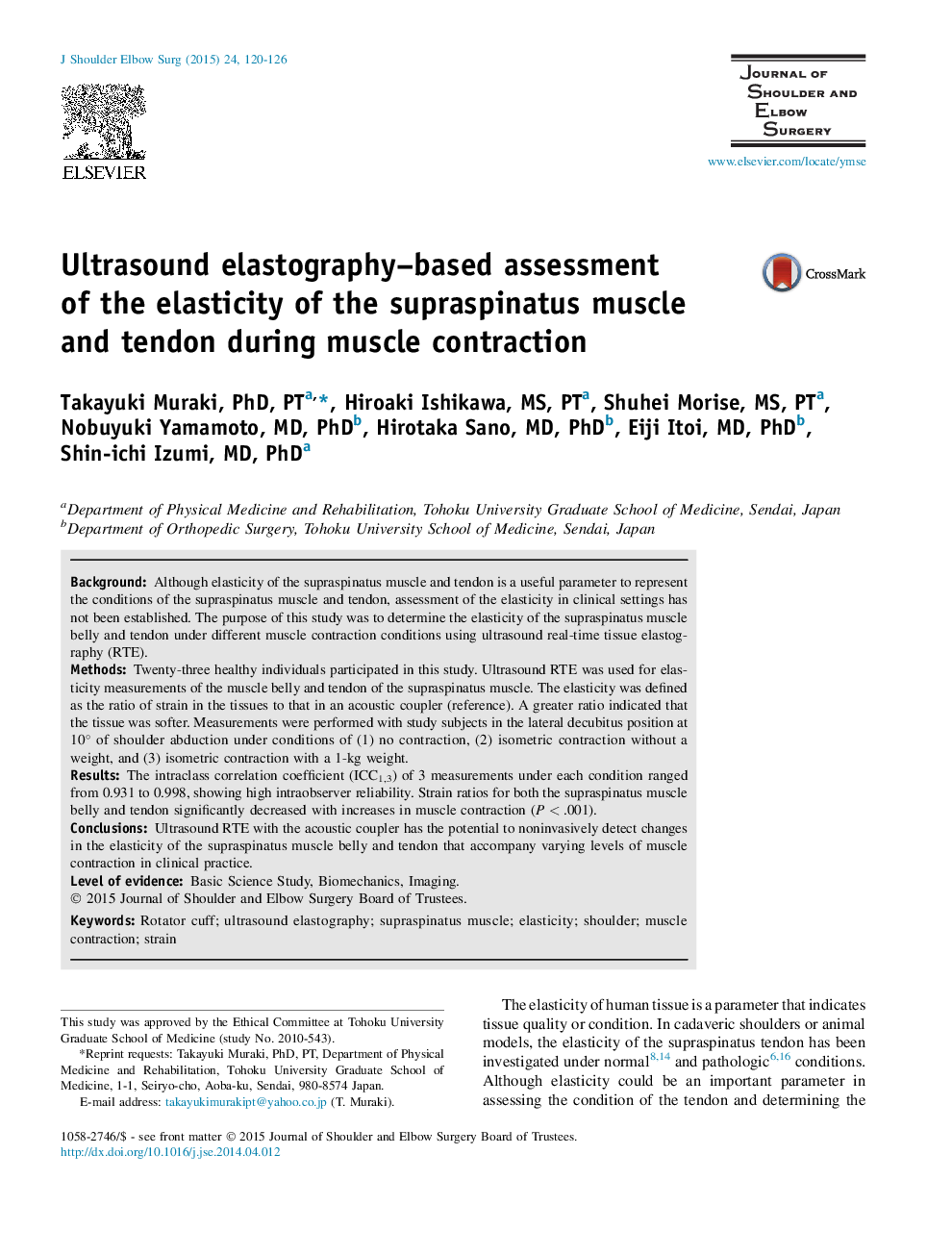| Article ID | Journal | Published Year | Pages | File Type |
|---|---|---|---|---|
| 4073811 | Journal of Shoulder and Elbow Surgery | 2015 | 7 Pages |
BackgroundAlthough elasticity of the supraspinatus muscle and tendon is a useful parameter to represent the conditions of the supraspinatus muscle and tendon, assessment of the elasticity in clinical settings has not been established. The purpose of this study was to determine the elasticity of the supraspinatus muscle belly and tendon under different muscle contraction conditions using ultrasound real-time tissue elastography (RTE).MethodsTwenty-three healthy individuals participated in this study. Ultrasound RTE was used for elasticity measurements of the muscle belly and tendon of the supraspinatus muscle. The elasticity was defined as the ratio of strain in the tissues to that in an acoustic coupler (reference). A greater ratio indicated that the tissue was softer. Measurements were performed with study subjects in the lateral decubitus position at 10° of shoulder abduction under conditions of (1) no contraction, (2) isometric contraction without a weight, and (3) isometric contraction with a 1-kg weight.ResultsThe intraclass correlation coefficient (ICC1,3) of 3 measurements under each condition ranged from 0.931 to 0.998, showing high intraobserver reliability. Strain ratios for both the supraspinatus muscle belly and tendon significantly decreased with increases in muscle contraction (P < .001).ConclusionsUltrasound RTE with the acoustic coupler has the potential to noninvasively detect changes in the elasticity of the supraspinatus muscle belly and tendon that accompany varying levels of muscle contraction in clinical practice.
